Courvoisier? No, this is not about the cognac of the same name, but about a Swiss family of watchmakers that can claim more than 200 years of watchmaking history and yet is hardly known. Don’t worry, we won’t work through the whole family tree here, but focus on a few family members.
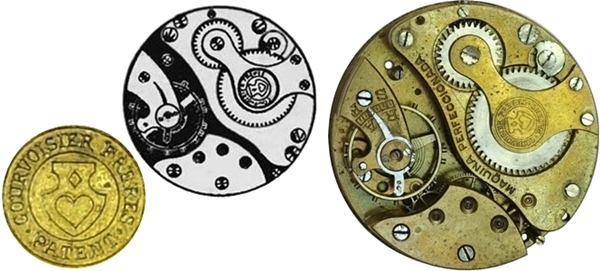
The story begins with Louis Courvoisier (1758 – 1832), who in 1787 was taken on by his father-in-law Josué Robert in the company he founded around 1770. From then on, the company was called J. Robert & Fils, Courvoisier & Cie. In 1795, the company name was changed to Robert & Courvoisier. Eventually Courvoisier took over the watchmaking department and from 1811 the company was called Courvoisier & Cie, based in La Chaux-de-Fonds, Geneva and Paris. Besides Louis Courvoisier, Jean-Pierre Robert and Humbert-Droz were also partners. Louis Courvoisier was probably very fond of traveling and had, among other things, established trade relations with Russia as early as 1815. At that time, Courvoisier was apparently one of the most important Swiss manufacturers of travel clocks.
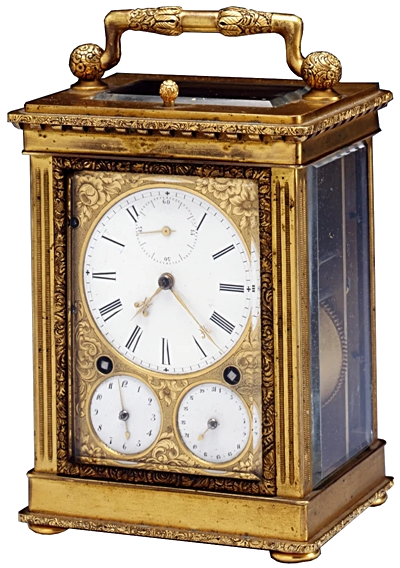
Louis Courvoisier had five sons and three daughters. The three sons Henri Louis (1796 – 1867), Frédéric Alexandre (1799 – 1854) and Philippe Auguste (1803 – 1873) were all associated with the company in one way or another. In 1825, Louis Courvoisier handed over the management of the company to Frédéric Alexandre Courvoisier. Frédéric Alexandre traveled for the company mainly on business, but returned frequently to La Chaux-de-Fonds to attend to company matters and political issues. His numerous trips took him to Italy, Portugal, Russia, Egypt and Turkey, among other places. He learned Italian, English, Spanish, Portuguese and some Russian.
Frédéric Alexandre Courvoisier, also called “Fritz the Commander,” was one of the military leaders of the 1848 revolution in the canton of Neuchâtel, which led to the end of Prussian rule. As early as 1831, he participated in the first radical liberal popular uprising in La Chaux-de-Fonds, which failed and led to his banishment to the canton of Bern.
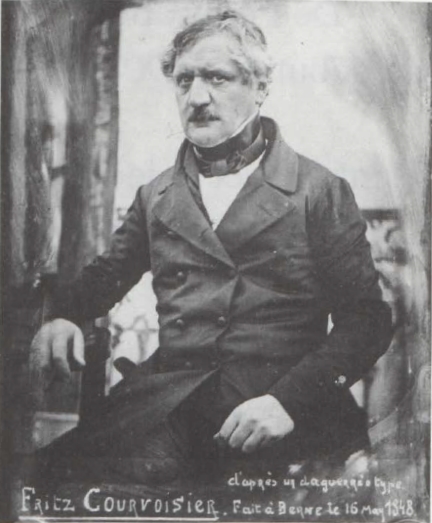
Fritz returned to La Chaux-de-Fonds around 1840. In 1842, the brothers went their separate ways. Fritz founded his own company, Fritz Courvoisier, to distinguish himself from his conservative brothers. The original company was continued by Henri Louis and Philippe Auguste under the name Courvoisier Frères.
Irony of history: In 1842, the Prussian king visited La Chaux-de-Fonds and Courvoisier Frères, of all companies, was asked by the city to produce a gold watch as a gift for the king. According to Henri Louis Courvoisier, this was the flattest watch in the world at the time.
In 1852 there was another change in the company. Philippe Auguste left and three sons of Henri Louis took the scepter, Henri Edouard, Louis Philippe and Jules Ferdinand. From this time on, 1852 was given as the date of foundation of the company. In the years that followed, the company apparently changed its name several times. It was not until 1880 that it traded again as Courvoisier Frères. Henri Edouard died in 1882 and the company became Courvoisier & Fils, run by Louis Philippe and his two sons, Emile and Louis. 110 years after its founding, the fourth generation of Courvoisiers was thus running the company. In 1883, the company was renamed Courvoisier & Cie. This did not last long either, as it became Courvoisier Frères again in 1885.
Around 1900, Courvoisier was particularly active in Portugal, Spain, South America and the Far East, selling pocket watches with the name El Aguila (the Eagle), among others.

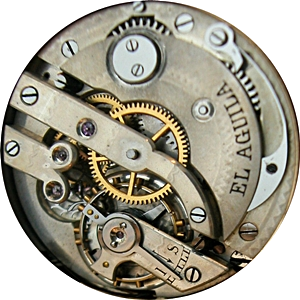
In 1905, Courvoisier registered a pocket watch with tourbillon under the name Mobilis, the construction of which was based on the Swiss patent CH30754 by Paul Loichet. What makes it special is that the tourbillon can be seen on the dial side of the movement. And the simple construction, which earned it the name People’s Tourbillon. Today, these watches are sought-after collector’s items!
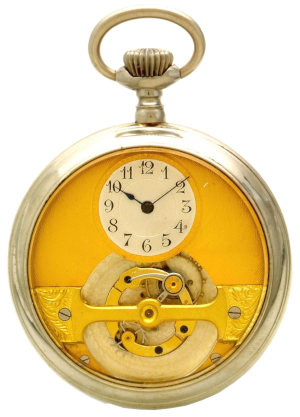
The game of changing company names is repeated a few more times. The company seems to have been active at least until about 1930, but it seems to have existed much longer. Unfortunately, I could not find any proof of its liquidation.
Between 1905 and 1924, Courvoisier had 13 movements reserved in the Swiss Official Gazette of Commerce as so-called models. We will now take a look at these. The respective model numbers could be arbitrarily assigned by each company. They did not have to follow a certain logic. There was also no obligation to register, so there could be movements of a manufacturer, which were not registered. And there did not have to be real existing copies of the registered movements.
The first registration from 1905 shows as model no. 1 the Mobilis tourbillon shown above:
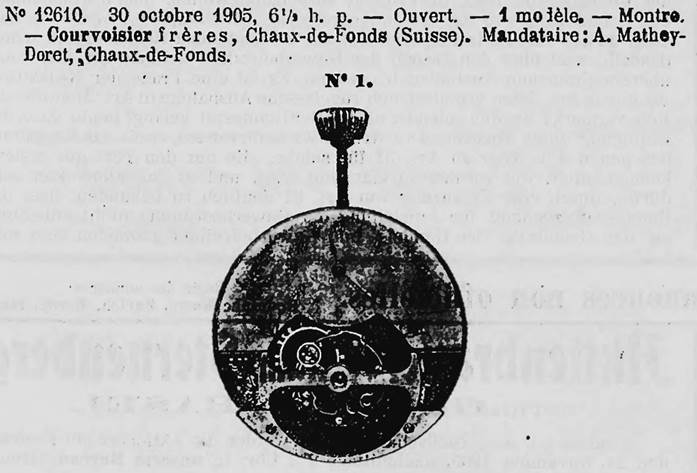
The 1677 and 1678 models followed at the end of 1908:
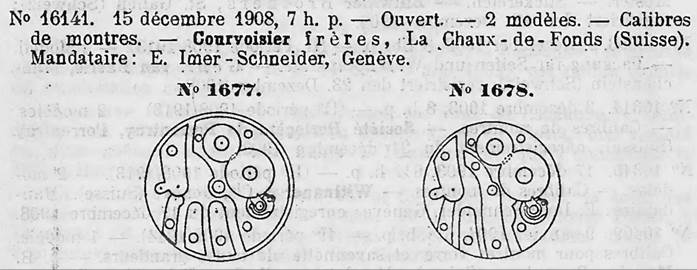
At the beginning of 1909, it continues with the 1679 and 1680 models:
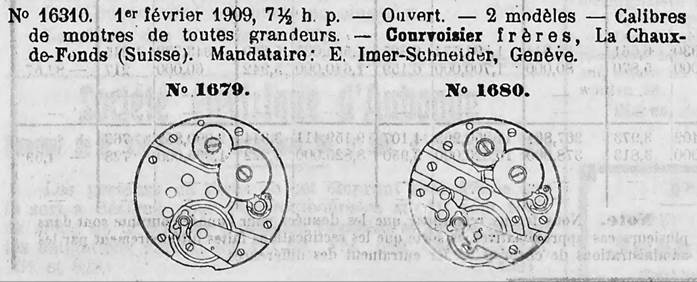
Then in 1913 the models 3, 4 and 5 were registered:
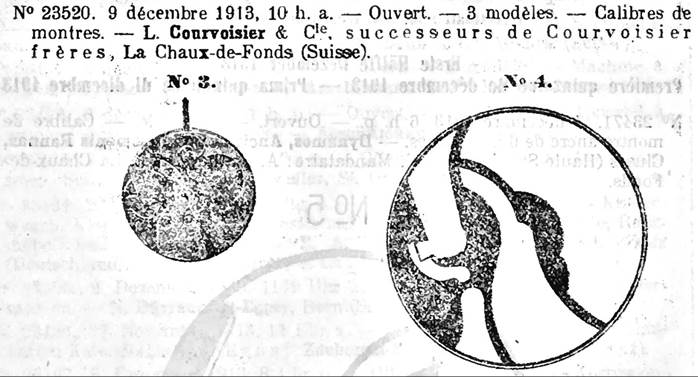
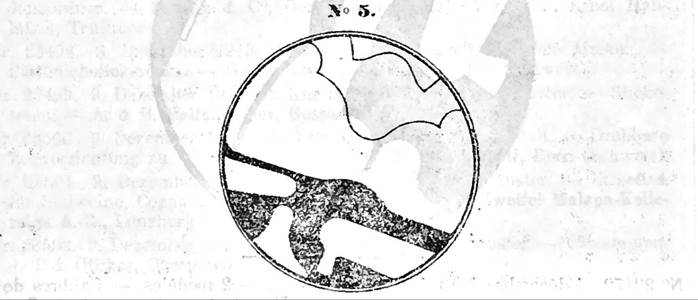
Six years later, in 1919, it was the models 121 and 123 that definitely exist as real movements.
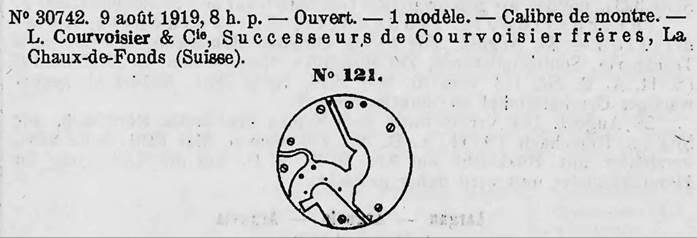
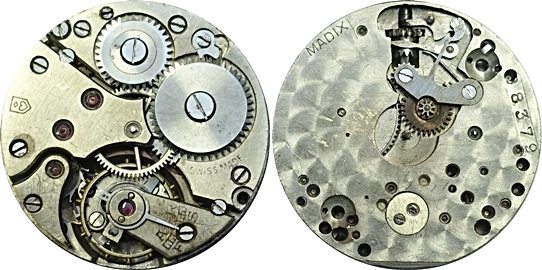
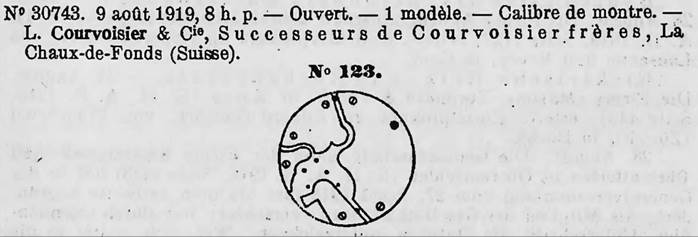

The model 121 is a classically constructed movement with a Swiss lever escapement, a diameter of 10 1/2´´´ (French lines), 15 jewels and a bimetallic screw balance. This specimen has no second indication, although this movement is pretty sure to exist with one.
Interesting is the mark MADIX on the dial side and this logo on the train bridge:

MADIX was one of many brands that Courvoisier registered and used over time.
The model 123 is almost identical to the model 121, it only has got different bridge shapes and a monometallic screw balance.
In 1921, we continue with the models 81 and 83. Model 33 was only a regulator for the balance cock. I can also show a genuine example of model 81 here.
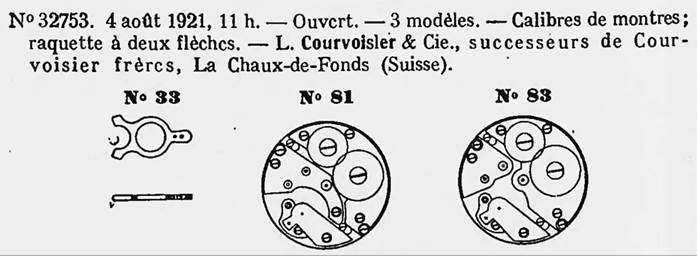
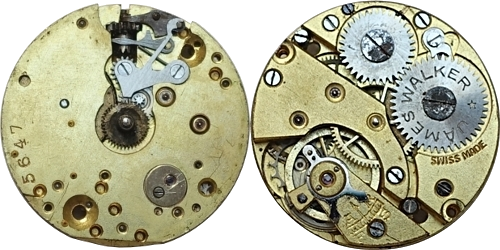
The shown model 81 has got a cylinder escapement, which was already obsolete at that time, a diameter of 9 3/4´´´, 10 jewels and also no second hand. The movement also contains the regulator shown above as model 33! On the ratchet wheel, the mark JAMES WALKER is hallmarked, which probably does not belong to Courvoisier.
The last registration is in 1924 with the model 17, which was also built.
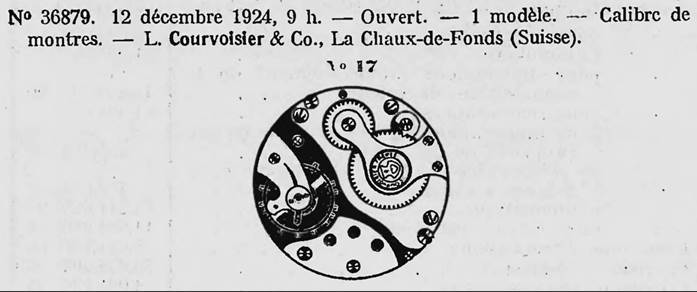
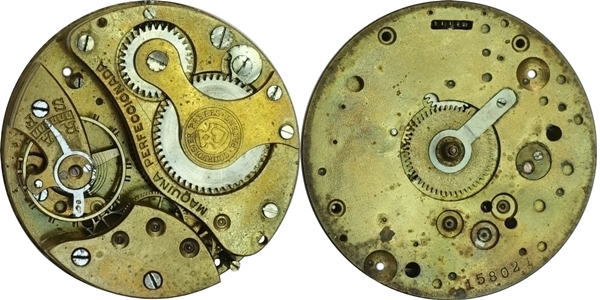
The model 17 has got a Swiss lever escapement, a diameter of 17´´´, 15 jewels, a monometallic screw balance and a subsecond. The construction is similar to a so called Roskopf movement, but they were mostly made with a pin lever escapement. The crown winding system with pusher was already outdated at that time.
Another variant of the Courvoisier logo can be seen on this movement:
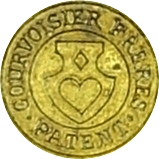
Both the history presented here and the overview of Courvoisier movements are by nature incomplete, but they do allow a small glimpse into the more than two hundred year history of a watchmaker that is almost unknown today.

Do you by any chance know whether the records still exist for Courvoisier et Cie, or more particularly the firm under the management of Auguste Courvoisier from the period approximately 1840 to 1852?
No, I don’t know if any records from this period still exist.